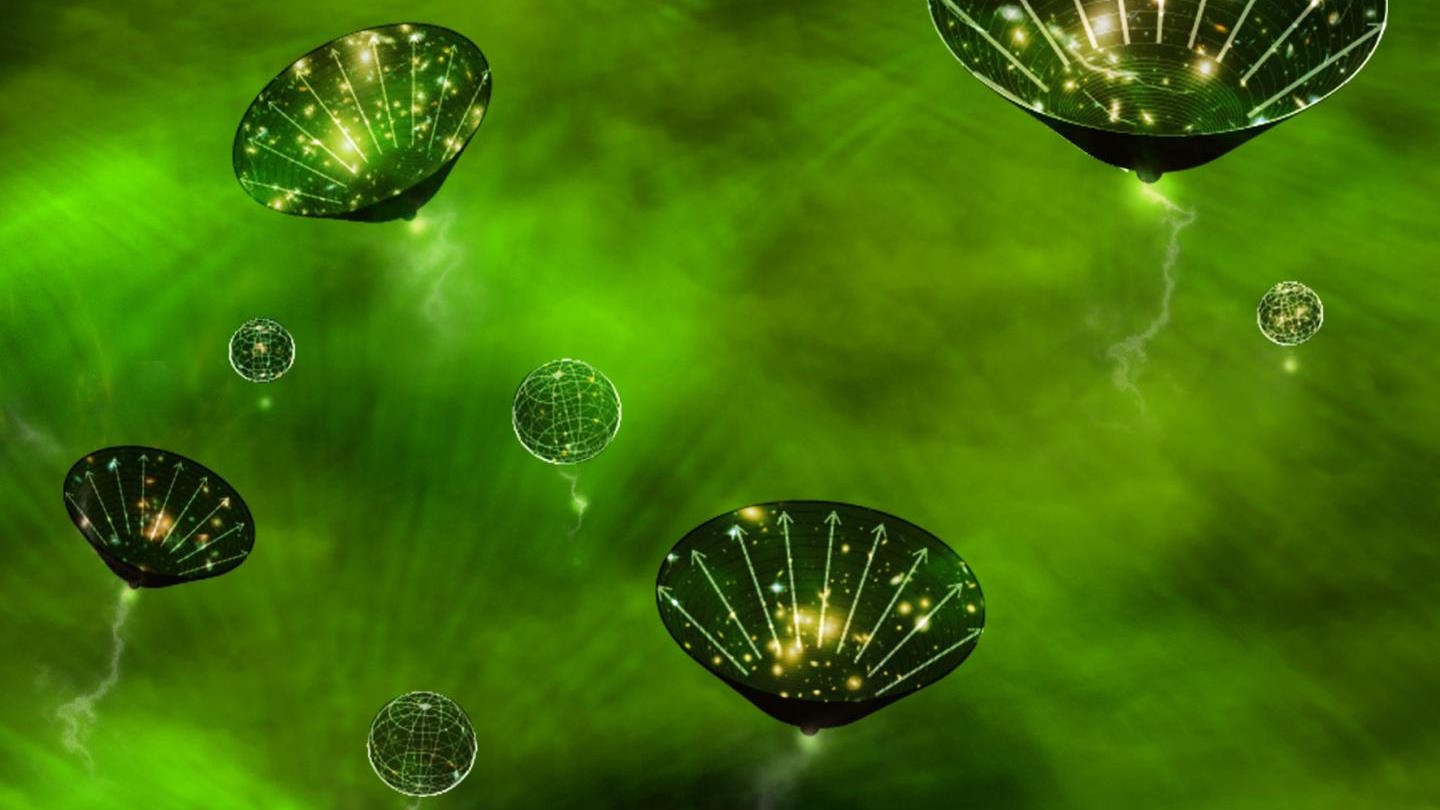Complexity science could transform 21st-century research. Here’s how.

- Complexity science shifts scientific inquiry from predictable laws to studying dynamic, emergent systems.
- In this 13.8 column, Adam Frank overviews what complexity science is and what distinguishes relatively simple systems from complex systems.
- By taking a transdisciplinary approach to studying complex systems, complexity science could help us tackle some of the most interesting questions of the 21st century: What is life? How do minds work? What drives the directions of social organization? And how does a biosphere co-evolve with the rest of a planet?
A new science is emerging that promises to become the defining field of the 21st century. More than just a narrow specialization, it’s not just a new field but a new way of doing science — a new way of organizing intellectual domains and effort. Given its broad impact, it goes by several names, but the one that embraces its full potential is complexity science. Today, I want to briefly introduce why it’s already so important and why it’s likely to define the frontiers of human inquiry for decades to come.
Complexity science
I’m writing this essay after beginning a door-jam of a book called Foundational Papers in Complexity Science. Volume One, 1922-1962. It’s part of an intended four-volume set to be published by the incomparable Santa Fe Institute (SFI). As promised in the title, the book contains key papers in the development of complexity as a field. What really makes the book worthwhile, however, is that each paper features an introduction written by a current researcher and annotated by that scientist. Even better yet, the first volume contains a masterful introduction to the field by David Krakauer, the head of SFI.
In that introduction, Krakauer lays out a clear, penetrating argument for what makes complexity science so important and such a break with the long history of scientific thinking. He introduces the idea of two different kinds of topics of study in the world: the A and B systems. The A systems exhibit fundamental regularities, obey simple laws, require minimal assumptions, and require minimal initial conditions. The targets of celestial mechanics (i.e., the clockwork behavior of the Solar System) are representative of an A system. The B systems are very different. Their description requires contingent histories with novel structures and behavior that emerge from nested hierarchies of sub-components. Most importantly, the B systems are always far from equilibrium. Energy and entropy flow through them allowing them to self-organize into self-adaptive structures where evolution (i.e., selection) plays an essential role.
As Krakauer points out, the A and B systems are so different that even the most perfect tool used for an A system — think of, for example, a super-powerful microscope that could resolve everything down to the sub-atomic scale — would be almost useless for the B systems.
The key aspect of B systems is their organization, which cannot be fully understood by reducing them to their fundamental (or “basal”) components. For example, consider an ecosystem like a rainforest. The interactions between plants, animals, microorganisms, and the environment create a complex web of relationships that cannot be understood by studying individual components in isolation. It’s the dynamic patterns of information within their organization that are crucial. As Krakauer puts it, “reductionism… not only fails to explain complexity; it fails to detect it.”
4 key elements of complexity
Complexity science deals with all those complicated B systems. Its purview runs the gamut from hurricanes to viruses to cells to nervous systems to societies to machines that might be capable of thinking. In this way, Krakauer identifies four domains that underpin complexity.
The first is evolution. When systems evolve through selection, it means some features persist and change while others are eliminated. In this way, entirely new orders of behavior become possible.
The second is entropy. This is a recognition that complex systems are not just complicated. Instead, they are engines of energy transformation. They pull energy from their surroundings, making them thermodynamically “open,” and transform the free part of that energy into work. That work usually involves making the system self-creating and self-maintaining. In the process, fluxes of entropy are generated that wash through the system and out into the environment.
The next feature is dynamics, which goes hand-in-hand with entropy. Complex systems can often be described using “dynamical system theory,” where rich, non-linear, and often chaotic behaviors allow for rich behaviors to emerge.
The final feature is computation. Complex systems are best described in terms of their use of information. Use here means storage, copying, transmission, and processing. Rocks don’t use information. Complex systems do.
The overlap of these different features means that complexity science is more than physics, more than biology, more than computer science, and more than mathematics. It is not multi-disciplinary — it’s transdisciplinary. It rises above them all, creating something entirely new. The old silos that gave us separate disciplines will still exist but the walls separating them will need to become porous.
In terms of importance, complexity science will define the forefront of 21st-century science because it will drive transformative change. The major problems we face, from climate change to threats to democracy to artificial intelligence, all fall within the purview of complexity science. Just as compelling, complexity science will be the engine for answering the most interesting questions of the 21st century: What is life? How do minds work? What drives the directions of social organization? How does a biosphere co-evolve with the rest of a planet?
While older science focusing on those A questions will continue and still discover amazing things, it no longer represents the most fertile ground for pushing at the edge of the future. That’s because the future belongs to complexity.





